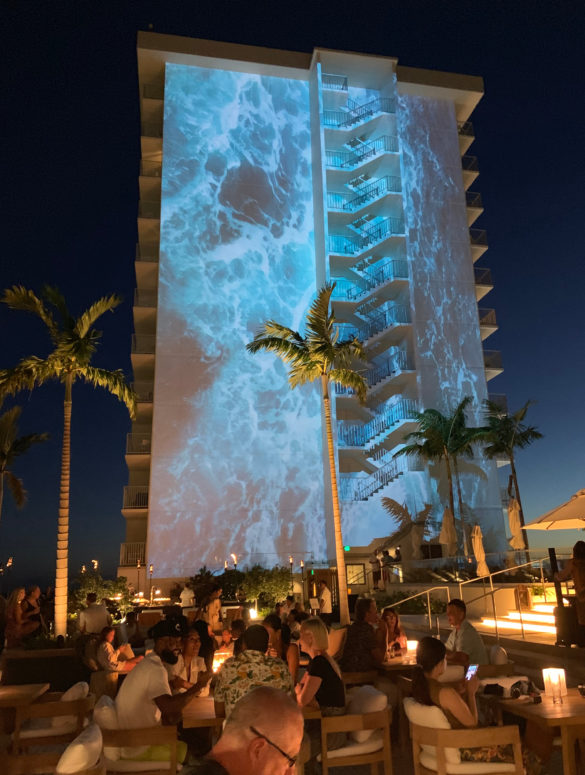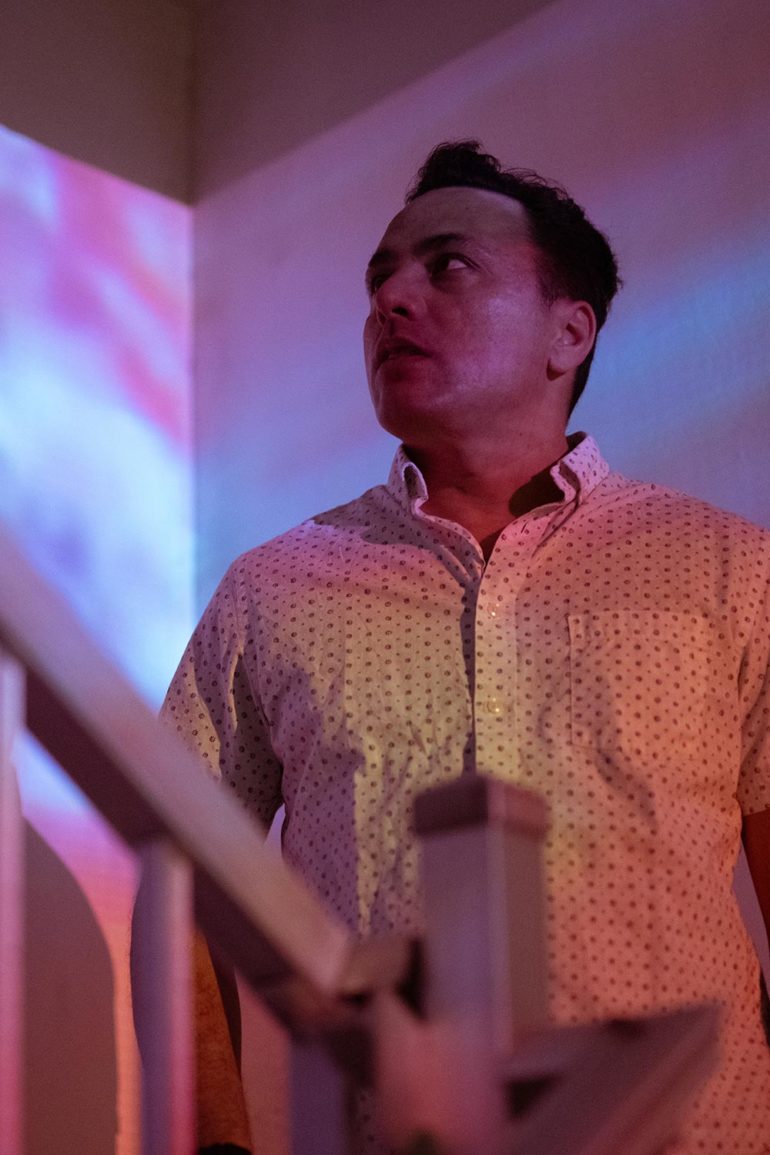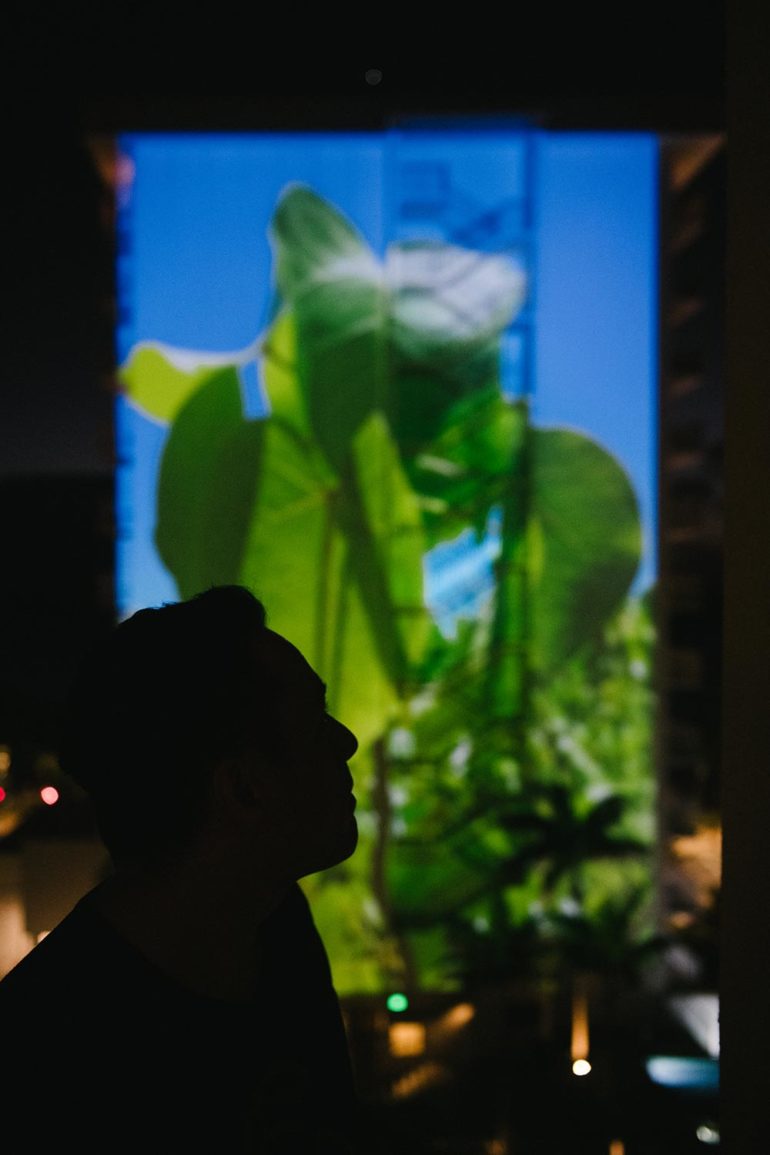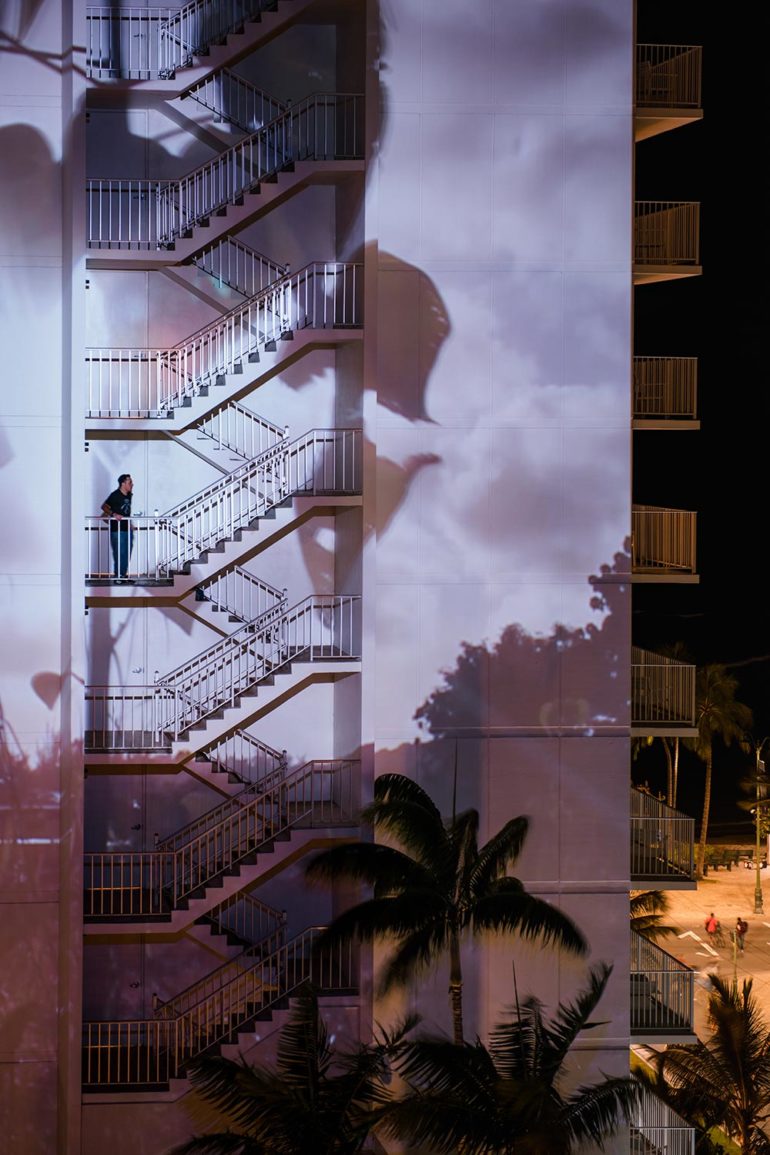“It’s a magic thing that’s happening,” says artist Joseph Pa‘ahana of the visual projections he created for ‘Alohilani Resort’s grand opening event in 2018. “Where there are patterns, we’ll find them, and those patterns will create the feeling that [the visuals, music, and lights are] all matching. If you suggest enough, the rest of the matching happens in your mind.”
Determined to showcase footage of the surf in Waikīkī for the installation but unequipped for ocean photography, Pa‘ahana purchased a waterproof iPhone bag and foam boogie board from a nearby ABC store and made the paddle out. Although he received strange looks from others in the lineup, Pa‘ahana was able to capture close-up footage of surfers gliding on clear, knee-high waves, pairing them with other meditations on light and movement: a sweeping seascape, a flickering flame, light dancing through palm leaves, the underside of a wave.
Pa‘ahana’s light show was such a success on opening night that ‘Alohilani commissioned him to produce additional video reels to be shown nightly between 7 p.m. and 10 p.m., transforming the pool and bar area into a vibrant social lounge accompanied by a rotating lineup of local entertainers. “[The projection] gets people to stick around after the sun goes down,” says the 38-year-old, who goes by the artist moniker UVAV. “It’s like a fireworks show. It allows visitors time to reflect on their day, especially because it’s a lot of Waikīkī imagery.” Due in large part to its Instagrammable nature, the light installation has become a trademark ‘Alohilani attraction. Depending on the day of the week, visitors can watch one of Pa‘ahana’s two follow-up videos, which feature scenes from Waikīkī and the North Shore of O‘ahu.
About 20 years ago, the artist was catering to an entirely different crowd—his classmates. While enrolled at King Kekaulike High School on Maui, Pa‘ahana convinced his teachers to let him film and direct a book report rather than write one. “They weren’t great quality,” he says with a smirk, “but they were a hit.” It wasn’t long before he was posting up in the school library’s new video editing lab. He was more formally introduced to videography when the USC School of Cinematic Arts paid a visit to his community college and brought lessons in instilling narrative in film, a skill that would come into play later in his career.
Upon moving to O‘ahu in his early 20s, Pa‘ahana shelved videography to pursue a more lucrative career in graphic design. His work ethic and ability to self-teach allowed him to utilize design programs like a professional, and he was soon producing designs for companies, film festivals, music events, and clothing brands. In 2004, he returned to video work for Honolulu’s developing nightclub scene, collaborating with Chinatown venues such as Nextdoor and the now-defunct bar and lounge Thirtyninehotel. Back then, Pa‘ahana’s work was highly influenced by music and featured quick cuts, neon colors, and raucous imagery—completely different from the work he does today.
These days, Pa‘ahana often draws inspiration from his native culture, incorporating totem pole and ki‘i pohaku (Hawaiian petroglyph) motifs in his graphic design projects and working on projects like the 2014 film Lāhainā Noon, a story that interweaves three narratives during a biannual solar phenomenon in Hawai‘i called Lāhainā Noon, when the sun’s position directly overhead prevents upright objects from casting shadows. The film references the Hawaiian belief that spiritual power is attained when a person’s shadow is absorbed back into the body.
In his solo work, Pa‘ahana has continued to apply an indigenous lens. In September 2016, he and fellow artists from the underground music and visual arts collective Spells produced an interactive light installation for the Honolulu Museum of Art’s monthly art party, Art After Dark. As commentary on the tourism industry’s appropriation of the word “aloha,” the Spells team had viewers use a console similar to a Nintendo Wii to control the movement and color of lights projected onto letters that spelled out “aloha.”
Always one to push the envelope, Pa‘ahana is currently revisiting his Light Monument installation, this time playing with the scale of ‘Alohilani’s beachside tower. “I’d like to have someone walk up the stairwell, jump off, and fly,” he says. “But it’s not real—it’s a video to scale. That could be cool.”









